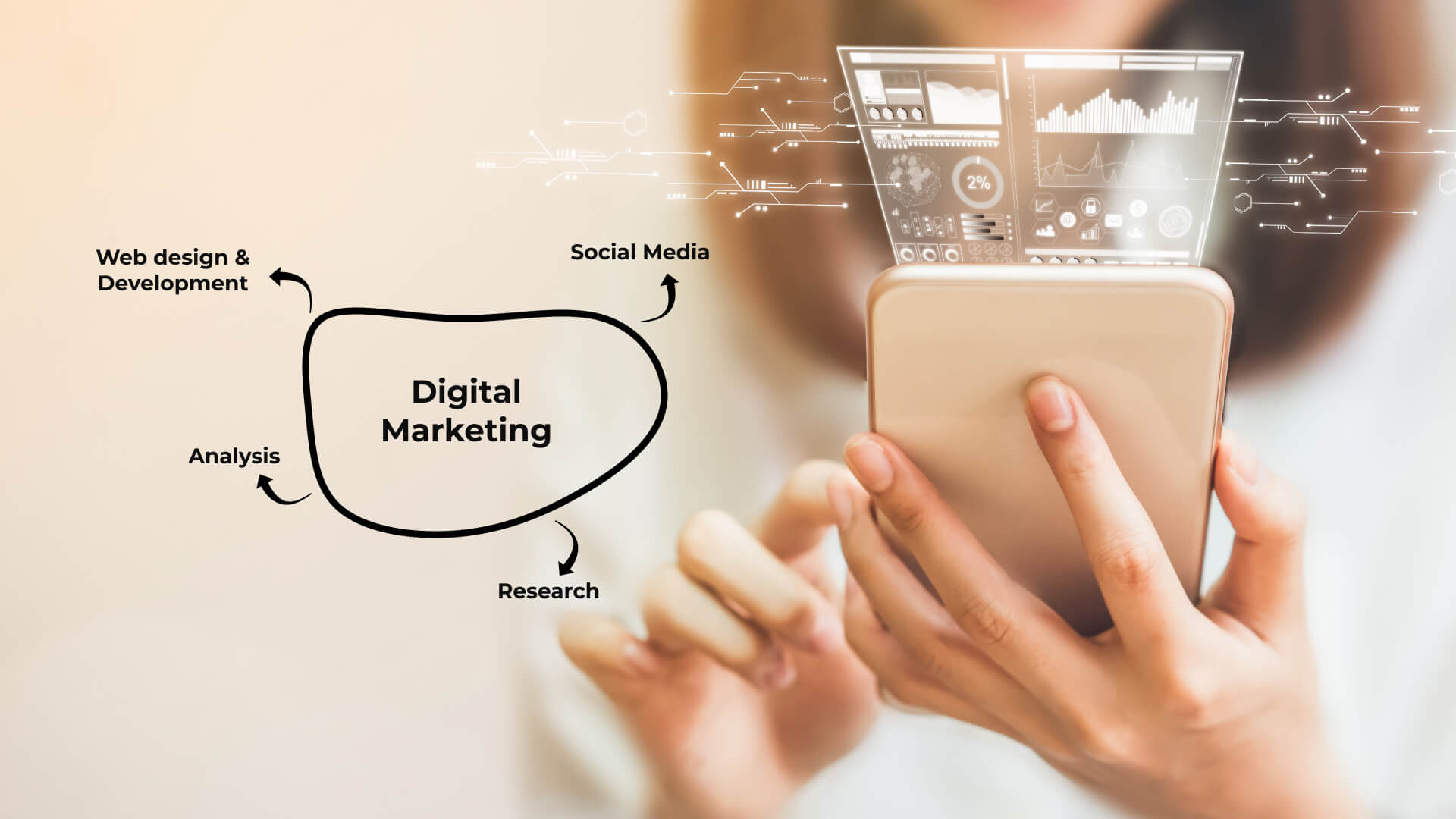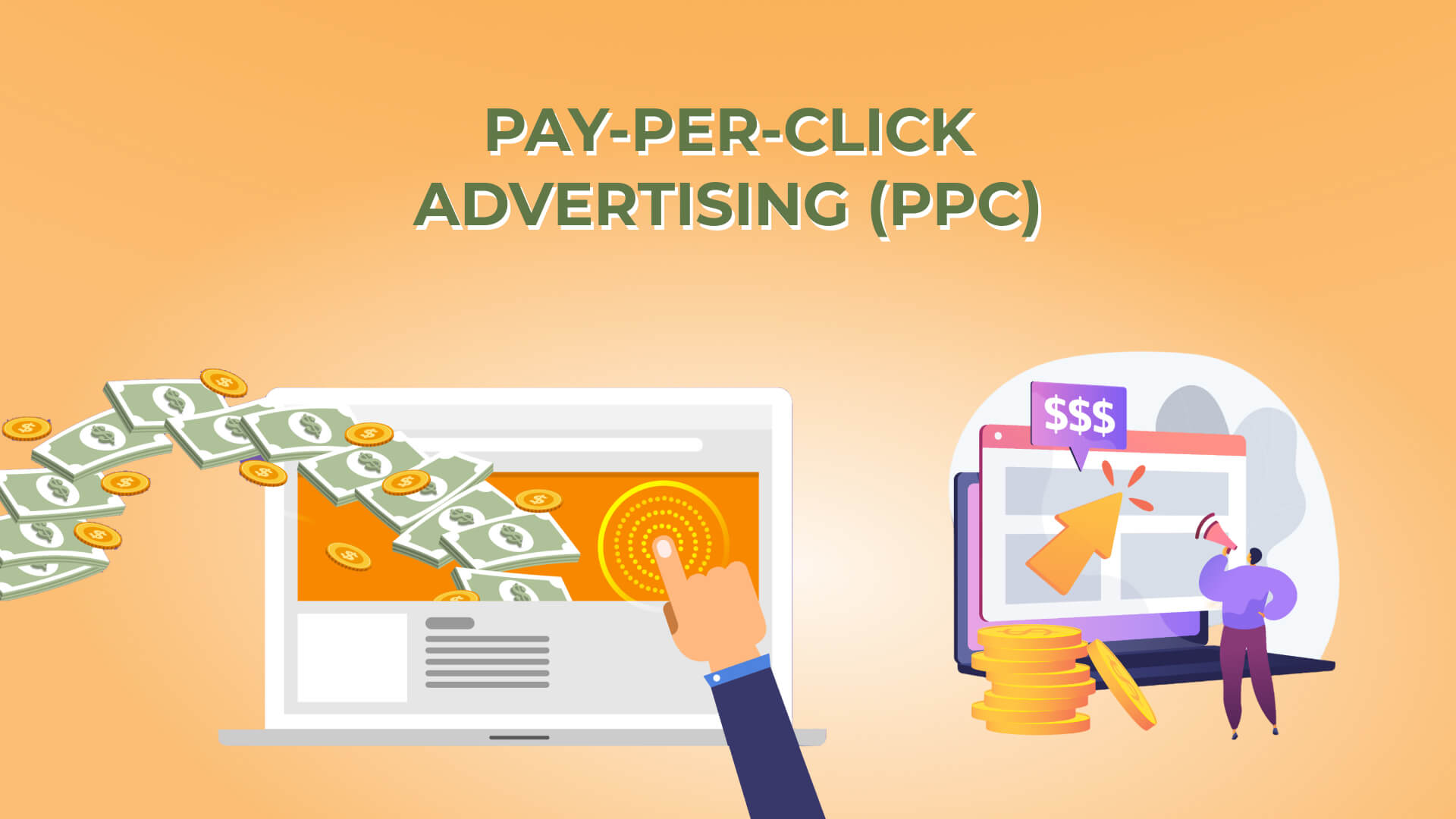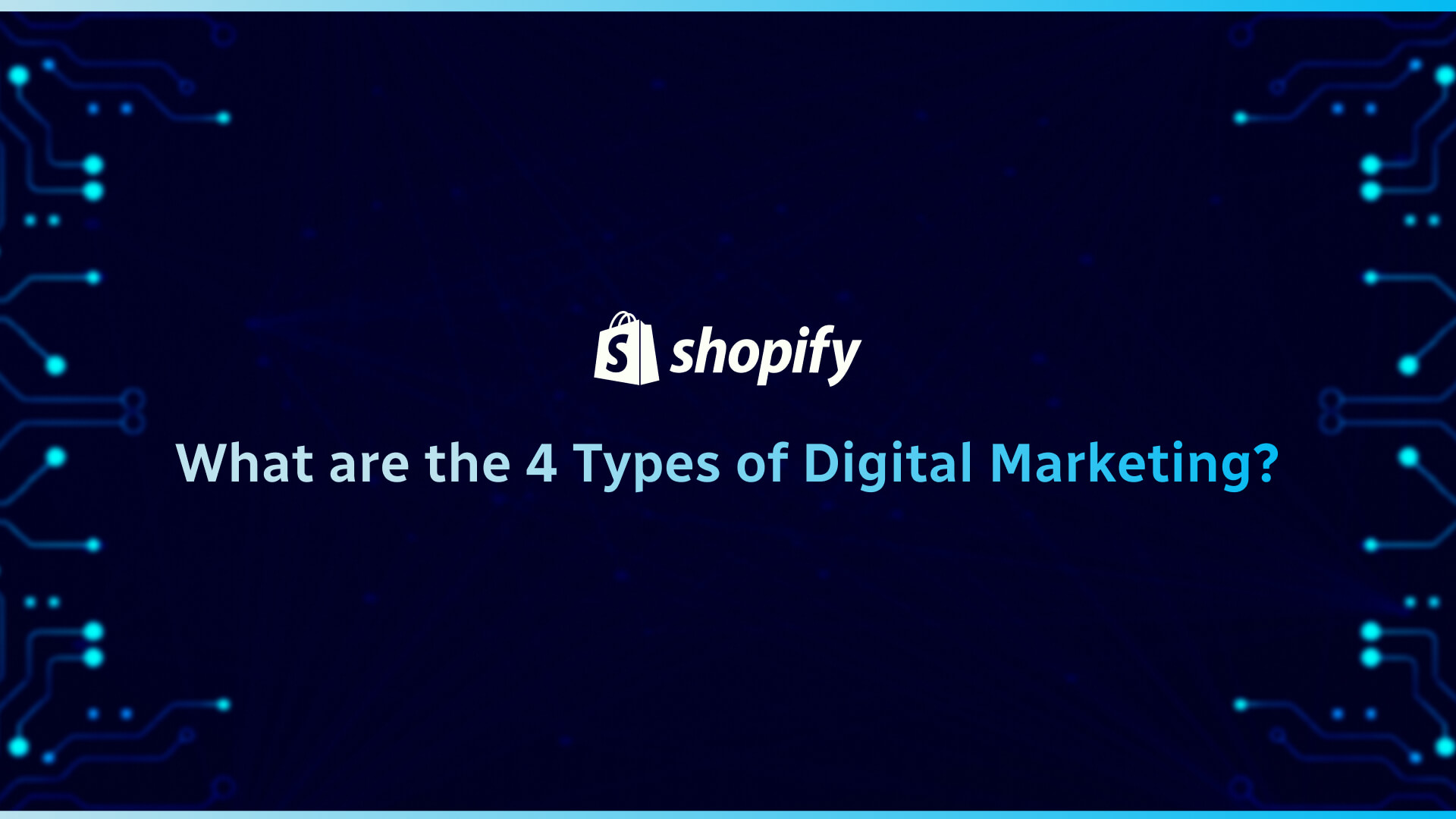- Table of Contents
- Introduction
- Search Engine Optimization (SEO)
- Pay-per-click Advertising (PPC)
- Content Marketing
- Social media marketing
- Conclusion
Introduction
In today’s digital age, digital marketing has become a crucial part of any business strategy. Digital marketing allows businesses to reach their target audience through various digital channels, such as social media, email, search engines, and websites. However, digital marketing is not just limited to these channels; there are several types of digital marketing that businesses can use to reach their target audience. In this article, we will discuss the four main types of digital marketing.

Search Engine Optimization (SEO)
Importance of SEO
SEO is crucial for any website or business that wants to be successful online. It helps improve visibility, credibility, and trust, which ultimately leads to more traffic, leads, and sales. By optimizing a website for search engines, businesses can increase their online presence, reach a wider audience, and outperform their competitors.
How Search Engines Work
Search engines, such as Google, use complex algorithms to determine the relevance and authority of web pages. These algorithms analyze various factors, such as keywords, content, backlinks, and user experience, to determine the ranking of a web page on the search results page.
On-page SEO Techniques
On-page SEO involves optimizing various on-page elements of a website to improve its visibility and ranking on SERPs. Here are some on-page SEO techniques to consider:
Keyword Research
Keyword research is the process of identifying the most relevant and profitable keywords for a website or webpage. It involves researching keywords that people use to search for products or services in a particular industry or niche.
Title Tag Optimization
The title tag is the HTML element that specifies the title of a web page. It is one of the most important on-page SEO factors and should be optimized with the primary keyword and compelling language to attract clicks.
Meta Description Optimization
The meta description is the short snippet that appears below the title tag on the SERP. It provides a brief summary of the page’s content and should be optimized with relevant keywords and a call-to-action.
Content Optimization
Content is a critical component of SEO, and optimizing it can improve a website’s ranking and visibility. It involves creating high-quality, relevant, and valuable content that satisfies the user’s search intent.
Header Tag Optimization
Header tags are HTML elements that indicate the headings and subheadings of a page. They should be optimized with relevant keywords and should be structured logically to improve readability and user experience.
Internal Linking
Internal linking is the process of linking to other pages on the same website. It helps search engines crawl and index a website’s pages more efficiently and improves the user’s navigation experience.
Image Optimization
Images can significantly impact a website’s ranking and should be optimized with relevant alt text, title tags, and file names.
Off-page SEO Techniques
Off-page SEO involves optimizing various factors that happen outside of a website to improve its visibility and ranking on SERPs. Here are some off-page SEO techniques to consider:
Link Building
Link building is the process of acquiring backlinks from other websites. Backlinks are crucial to SEO because they signal to search engines that a website is trustworthy, authoritative, and relevant. However, not all links are created equal, and it is essential to acquire high-quality, relevant, and natural links from reputable websites.
Social Media Marketing
Social media marketing is the process of using social media platforms to promote a website or business. It can help improve brand awareness, drive traffic, and increase engagement. However, it is essential to choose the right social media platforms and create engaging and shareable content.
Guest Posting
Guest posting is the process of writing and publishing articles on other websites with a link back to your website. It is an effective way to build backlinks, improve visibility, and establish authority in a particular industry or niche.
Technical SEO
Technical SEO involves optimizing various technical aspects of a website to improve its performance and ranking on SERPs. Here are some technical SEO techniques to consider:
Site Speed
Site speed is crucial to SEO because it impacts user experience, bounce rate, and conversion rate. It is essential to optimize images, compress files, and minimize HTTP requests to improve site speed.
Mobile Optimization
Mobile optimization is crucial to SEO because more than 60% of internet users access the internet using mobile devices. It involves creating a responsive and mobile-friendly website that adapts to different screen sizes and resolutions.
URL Structure
URL structure is crucial to SEO because it impacts crawling and indexing. URLs should be short, descriptive, and keyword-rich to improve visibility and ranking.
Local SEO
Local SEO is the process of optimizing a website for local search results. It involves creating a Google My Business profile, optimizing on-page and off-page elements with local keywords, and acquiring local backlinks.
Black Hat SEO Techniques to Avoid
Black hat SEO techniques are unethical and manipulative practices that violate search engine guidelines. Some of these techniques include keyword stuffing, cloaking, link schemes, and content scraping. Engaging in black hat SEO can result in penalties and a loss of visibility and ranking.
Measuring and Analyzing SEO Performance
Measuring and analyzing SEO performance is crucial to improving and refining SEO strategies. Some of the key metrics to track include organic traffic, keyword rankings, bounce rate, conversion rate, and backlinks. Tools such as Google Analytics and Google Search Console can help track and analyze SEO performance.
Best SEO Practices
Some of the best SEO practices to consider include creating high-quality, relevant, and valuable content, optimizing on-page and off-page elements with relevant keywords, acquiring high-quality and relevant backlinks, and monitoring and analyzing SEO performance regularly.
Pay-per-click Advertising (PPC)

What is Pay-per-click Advertising (PPC)?
Pay-per-click advertising (PPC) is a digital advertising model in which advertisers pay each time a user clicks on one of their ads. These ads are typically displayed in search engine results pages or on websites, and the advertiser pays a fee to the publisher each time a user clicks on the ad.
PPC advertising allows advertisers to target specific keywords, demographics, and geographic locations, making it a highly effective form of advertising. Additionally, because advertisers only pay for clicks, PPC advertising can be more cost-effective than other forms of advertising.
How Does PPC Advertising Work?
PPC advertising works by allowing advertisers to bid on specific keywords that are relevant to their business. When a user searches for those keywords, the search engine will display ads that are relevant to the user’s search query. The ads are ranked based on the advertiser’s bid for the keyword and the ad’s relevance to the user’s search query.
When a user clicks on an ad, the advertiser is charged a fee, and the user is directed to the advertiser’s landing page. The amount charged per click varies based on the advertiser’s bid and the competitiveness of the keyword.
Benefits of Using PPC Advertising
PPC advertising offers several benefits for businesses, including:
- Targeted Advertising: PPC advertising allows businesses to target specific keywords, demographics, and geographic locations, ensuring that their ads are seen by the right people.
- Cost-effective: Because advertisers only pay for clicks, PPC advertising can be more cost-effective than other forms of advertising.
- Measurable: PPC advertising provides detailed analytics that allow advertisers to track their campaign’s performance and make adjustments as needed.
- Immediate Results: PPC advertising provides immediate results, allowing businesses to see an increase in traffic and sales as soon as their campaign is launched.
- Brand Awareness: PPC advertising can increase brand awareness and exposure, even if users don’t click on the ad.
Types of PPC Advertising
There are several types of PPC advertising, including:
Search Ads
Search ads are the most common type of PPC advertising. These ads are displayed in search engine results pages and are targeted based on the user’s search query.
Display Ads
Display ads are graphical ads that are displayed on websites. These ads can be targeted based on demographics, interests, and website content.
Social Media Ads
Social media ads are displayed on social media platforms, such as Facebook and Twitter. These ads can be targeted based on demographics, interests , and behaviors.
Remarketing Ads
Remarketing ads are targeted Pay-per-click Advertising (PPC)at users who have previously interacted with a business’s website or ad. These ads can help to bring users back to the website and increase conversions.
Creating a Successful PPC Campaign
Creating a successful PPC campaign requires careful planning and execution. Here are some key steps to follow:
Define Your Goals and Target Audience
Before launching a PPC campaign, it’s important to define your goals and target audience. Determine what you want to achieve with your campaign and who your target audience is. This will help you to create more effective ads and target the right people.
Choose the Right Keywords
Choosing the right keywords is critical to the success of your PPC campaign. Conduct keyword research to determine which keywords are most relevant to your business and have the highest search volume.
Write Compelling Ad Copy
Your ad copy should be compelling and engaging, with a clear call-to-action. Highlight the benefits of your product or service and make sure that your ad copy is relevant to the keywords you are targeting.
Design Effective Landing Pages
Your landing page should be designed to convert visitors into customers. It should be easy to navigate, visually appealing, and have a clear call-to-action.
Set a Budget and Bidding Strategy
Set a budget for your PPC campaign and determine your bidding strategy. Consider using automated bidding tools to help you optimize your bids and get the most out of your budget.
Monitor and Optimize Your Campaign
Monitor your campaign regularly to ensure that it is performing as expected. Make adjustments as needed, such as changing your keywords, ad copy, or landing pages.
Common Mistakes to Avoid in PPC Advertising
There are several common mistakes that businesses make when it comes to PPC advertising. Avoid these mistakes to ensure the success of your campaign:
- Not defining clear goals and target audience
- Using irrelevant keywords
- Writing poor ad copy
- Having a poorly designed landing page
- Not monitoring and optimizing your campaign regularly
PPC Advertising vs. SEO
PPC advertising and search engine optimization (SEO) are two different approaches to online marketing. PPC advertising provides immediate results but can be more expensive, while SEO takes longer to see results but can be more cost-effective in the long run.
PPC Advertising Trends to Watch in 2023
PPC advertising is constantly evolving, with new trends and technologies emerging all the time. Here are some PPC advertising trends to watch in 2023:
- Increased use of automation and AI
- Greater emphasis on personalization and audience targeting
- More use of video and interactive ads
- Greater integration with social media platforms
Content Marketing

What is Content Marketing?Content marketing is a strategic approach to creating and distributing valuable, relevant, and consistent content to attract and retain a clearly defined audience – with the ultimate goal of driving profitable customer action. Essentially, content marketing is a way to communicate with your customers and potential customers without directly selling to them.
Why is Content Marketing Important?
Content marketing is an incredibly effective way to reach your target audience and establish your brand as a thought leader in your industry. By creating and sharing valuable content, you can position your business as a trusted resource and build a loyal following. Additionally, content marketing can help you improve your search engine rankings, increase website traffic, and generate leads.
Developing a Content Marketing Strategy
Before you can start creating content, you need to develop a solid content marketing strategy. This involves understanding your target audience, defining your goals and objectives, identifying the best channels for your content, and creating a content calendar.
Understanding Your Target Audience
To create effective marketing content, you need to understand who you’re creating it for. This means developing buyer personas that represent your ideal customers. You should consider factors such as age, gender, income level, education level, interests, pain points, and goals.
Defining Your Goals and Objectives
What do you hope to achieve through your content marketing efforts? Are you looking to increase website traffic, generate leads, or build brand awareness? Once you’ve defined your goals, you can develop specific objectives and key performance indicators (KPIs) to track your progress.
Identifying the Best Channels for Your Content
There are many different channels you can use to distribute your content, including social media, email marketing, blogging, and more. To determine which channels are best for your business, consider your target audience and where they are most likely to consume content.
Creating a Content Calendar
A content calendar can help you stay organized and ensure that you’re consistently publishing quality content. You should plan out your content in advance, taking into account upcoming holidays, industry events, and other relevant dates.
Creating Quality Content
Once you’ve developed your content marketing strategy, it’s time to start creating content. Here are some tips for creating quality marketing content:
Determining Your Content Type
There are many different types of content you can create, including blog posts, infographics, videos, eBooks, and more
Conducting Keyword Research
Keyword research is an essential step in creating SEO-friendly content. By conducting keyword research, you can identify the search terms that your target audience is using to find content related to your industry. You can then incorporate those keywords into your content to improve your search engine rankings.
Writing Attention-Grabbing Headlines
Your headlines are the first thing your audience will see, so it’s important to make them attention-grabbing and informative. Use clear language that accurately represents the content of your article, and consider including numbers or statistics to make your headlines more compelling.
Crafting Engaging Content
To create engaging content, you need to understand your audience’s pain points and interests. Use storytelling and real-world examples to make your content relatable and engaging. Additionally, make sure your content is well-written, free of errors, and provides value to your audience.
Incorporating Visuals and Multimedia
Visuals and multimedia can help you make your content more engaging and shareable. Consider using images, videos, infographics, and other multimedia elements to break up long blocks of text and make your content more visually appealing.
Promoting Your ContentCreating quality content is just the first step in a successful content marketing strategy. You also need to promote your content to ensure that it reaches your target audience. Here are some tips for promoting your content:
Utilizing Social Media
Social media is a powerful tool for promoting your content and reaching a wider audience. Share your content on your social media profiles, and consider using paid social media ads to target specific audiences.
Email Marketing
Email marketing is another effective way to promote your content and build relationships with your audience. Use email marketing to share your latest blog posts, promote your products or services, and provide valuable content to your subscribers.
Influencer Marketing
Influencer marketing involves partnering with individuals who have a large social media following to promote your content or products. Consider reaching out to influencers in your industry to see if they’re interested in collaborating.
Search Engine Optimization (SEO)
SEO is the process of optimizing your website and content to improve your search engine rankings. By incorporating relevant keywords into your content, optimizing your meta tags, and building high-quality backlinks, you can improve your visibility in search engine results pages.
Analyzing Your Results
To ensure that your content marketing strategy is effective, you need to regularly analyze your results. Here are some key metrics to track:
Defining Your Key Performance Indicators (KPIs)
Your KPIs will depend on your specific goals and objectives. For example, if you’re looking to generate leads, you might track the number of form submissions or email sign-ups you receive.
Analyzing Your Website and Social Media Metrics
Use tools like Google Analytics and social media analytics to track metrics such as website traffic, engagement, and conversions. This data can help you identify which pieces of content are resonating with your audience and adjust your strategy accordingly.
Measuring the Success of Your Content
To determine the success of your content, track metrics such as social shares, backlinks, and page views. Additionally, use customer feedback and surveys to gain insights into how your audience is responding to your content.
Social media marketing

Social media marketing is a powerful tool for businesses to reach their target audience and promote their products or services. With more than 4.2 billion active social media users worldwide, social media platforms have become an essential part of any company’s marketing strategy. In this blog, we will discuss what social media marketing is, how it works, and the benefits it can bring to your business.
What is social media marketing?
Social media marketing involves using social media platforms such as Facebook, Instagram, Twitter, LinkedIn, and others to promote your brand, engage with your target audience, and drive traffic to your website or landing page. Social media marketing can include various strategies such as creating and sharing content, running ads, and engaging with your followers to build relationships and brand loyalty.
How does social media marketing work?
Social media marketing involves creating and sharing content that resonates with your target audience. This content can be in the form of text, images, videos, or other media that provides value to your audience. For instance, a company selling fitness products might share workout videos, healthy recipes, and inspirational quotes to engage with their target audience and promote their brand.
One of the main advantages of social media marketing is that it allows businesses to reach a large audience quickly and cost-effectively. Social media platforms use algorithms to target users based on their interests, demographics, and behavior, making it easier for businesses to reach their ideal customers.
Social media marketing also allows businesses to engage with their audience directly, responding to comments and messages, and building relationships with their followers. This can help businesses build trust and brand loyalty, which can lead to increased sales and customer retention.
Benefits of social media marketing
- Increased brand awareness: Social media platforms offer businesses an opportunity to reach a large audience quickly and cost-effectively. This can help increase brand awareness and reach new customers.
- Improved engagement: Social media platforms allow businesses to engage with their audience directly, responding to comments and messages, and building relationships with their followers. This can help improve engagement and build brand loyalty.
- Increased website traffic: Social media platforms can be used to drive traffic to your website or landing page. By sharing links to your website on your social media profiles or running ads that direct users to your website, you can increase your website traffic and generate leads.
- Cost-effective marketing: Social media marketing can be a cost-effective way to promote your brand and reach your target audience. Many social media platforms offer free tools for businesses to create and share content, and running ads can be more cost-effective than traditional marketing channels.
- Improved customer insights: Social media platforms offer businesses valuable insights into their audience’s behavior, interests, and preferences. By analyzing this data, businesses can optimize their social media marketing strategies to better target their audience and improve their overall marketing efforts.
Conclusion
In conclusion, digital marketing is a crucial part of any business strategy. By using the four types of digital marketing discussed in this article, businesses can reach their target audience through various digital channels, improve their visibility on search engines, and establish themselves as thought leaders in their industry. However, it’s important to note that digital marketing is not a one-size-fits-all approach; businesses need to tailor their digital marketing strategy to their target audience and business goals. By doing so, businesses can effectively use digital marketing to grow their brand and increase their revenue.





